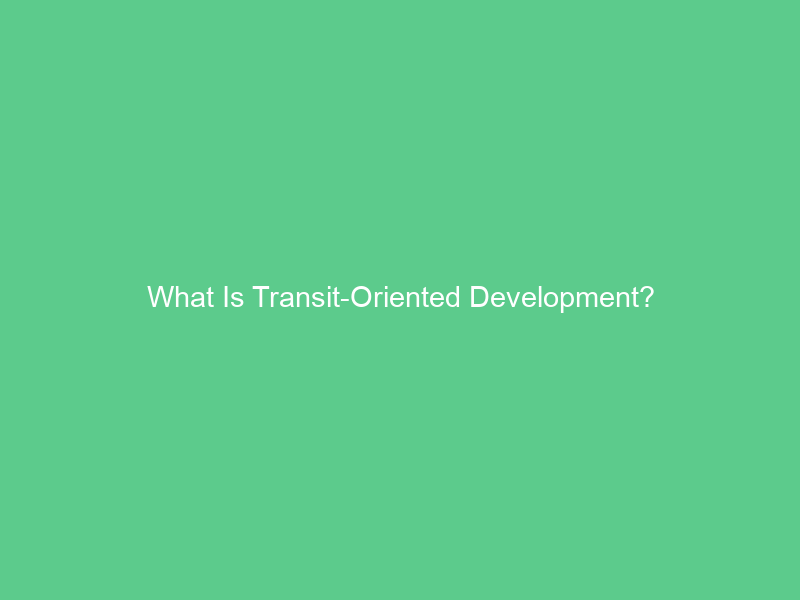Transit-oriented development (TOD) is an emerging trend aimed at creating vibrant, livable communities near high quality train stations, giving residents the option of living a less stressful lifestyle while decreasing reliance on personal vehicles for transportation needs.
Communities built around rail stations create lively hubs of activity, reduce energy usage and driving, support small businesses thrive and promote walkable neighborhoods promoting more public transit use.
High-density development
High-density development is a form of Transit-oriented development which encourages residents to live closer to public transportation nodes, by combining urban housing, retail, open spaces and parks into one cohesive development that promotes public transport use. This strategy can reduce traffic congestion and air pollution while protecting natural areas while increasing housing options within urban neighborhoods. Design of such developments is paramount to their success: safe, comfortable, attractive designs must include amenities that appeal to residents while still offering adequate security and ease of access for transit service users.
High-density development typically surrounds light rail or bus stations, featuring both dense centers and lower-density neighborhoods surrounding them. Ideally, this should occur within half a mile from transit stops; additionally, these developments should aim to ease traffic congestion and parking problems as part of their design. Unfortunately, high density developments do come with some drawbacks, including having negative environmental consequences and crowding out affordable housing from urban neighborhoods.
Mixed-use development
Mixed-use development is a form of Transit-oriented development which integrates various uses into one walkable area, either vertically or horizontally. An example would be a building with retail on the ground floor and residential units on upper floors; such projects have proven popular for urban environments due to reducing car dependency while making more attractive to pedestrians.
Also, walkable communities help improve community health by decreasing distance between people and places they want to go – like shops or gyms – as well as increasing housing affordability and small business viability for residents across multiple income levels.
Many communities are revising or creating comprehensive plans to incorporate mixed-use development, with strategies such as outlining areas suitable for this development and encouraging developers to utilize them; offering incentives like expedited permit review or reduced development fees as incentives for mixed use development.
Walkable communities
Walkable neighborhoods, also known as Transit-Oriented Development (TOD), are urban areas where everyday activities such as work, shopping and recreation can be reached easily without needing a car. TODs typically feature high population densities with mixed uses that include affordable housing options as well as access to public space – offering many benefits such as lower emissions and traffic congestion as well as enhanced social interactions and physical activity opportunities.
Research has proven TOD an effective strategy for increasing transit ridership, with people living within walking distance of a station being more likely to commute by bus or train than those not living nearby. This may be partly because communities that encourage alternative forms of transportation save residents money over time and reduce car ownership requirements; they also support local businesses which create revenue and foster economic development in these neighborhoods.
Transit access
Transit-oriented development (TOD) is an evolving trend in city planning that emphasizes creating exciting people places around high quality train systems. Living near train stations reduces energy usage by up to 85% and driving costs, as well as helping with climate change mitigation and global energy security issues.
TOD (Transit-Oriented Development) is a strategy which concentrates jobs, housing, and services near public transport stations, creating vibrant walkable communities that better suit cycling and walking than conventional suburban models.
TBEST Access to Transit Workflow Support Tool offers an engaging and user-friendly Summary dashboard interface, allowing users to compare multiple Access to Transit analysis results in one market area. The Access to Transit Comparison Report summarizes detailed walk access demographics by geographic band and quickly highlights any market impacts – aiding decision-making when it comes to making system accessibility modifications.

